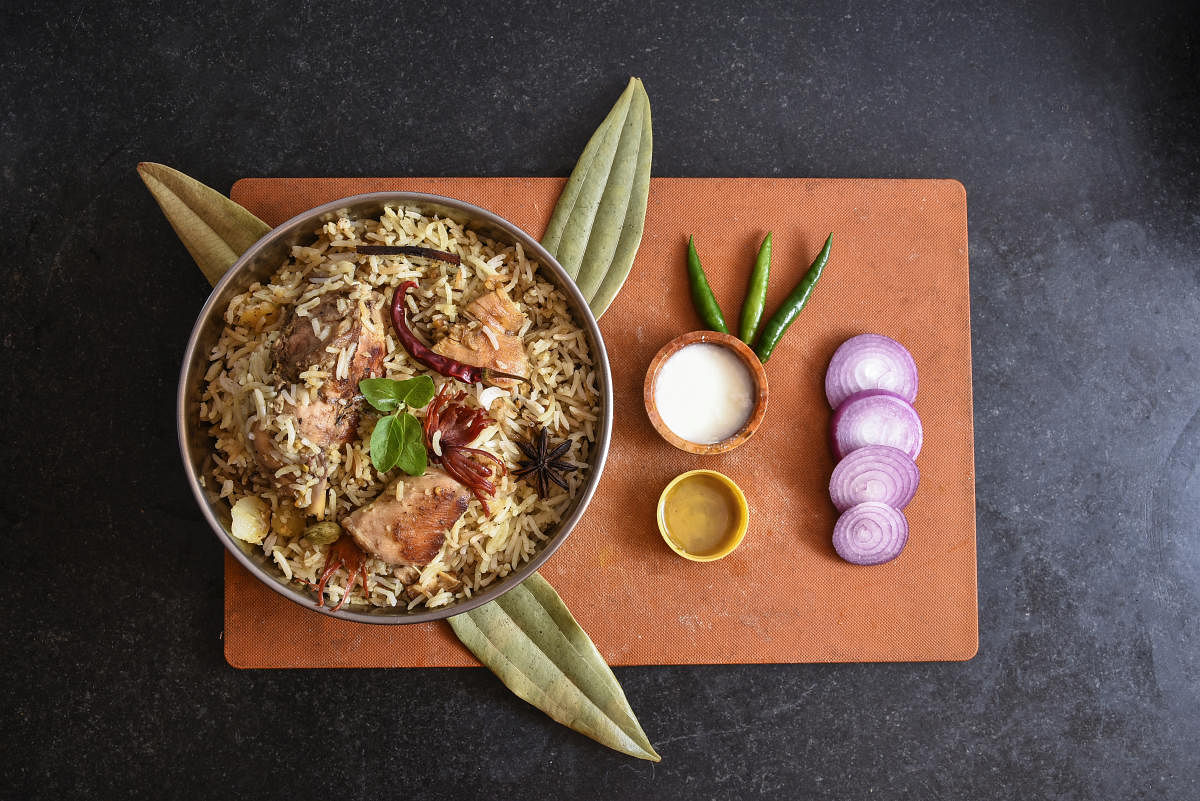Slow art of aromatics

Many moons ago I had the great good fortune to spend an afternoon with the legendary Imtiaz Quereshi, master chef at ITC Hotels, and the man behind the renowned Bukhara brand. Being a convent-educated illiterate whose knowledge of Urdu ended at wah-wah, I must admit that most of Quereshi Saheb’s mellifluous quatrains wasted their sweetness on the desert air of my ignorance, but I couldn’t help being struck by the man’s passion for his craft. During a state banquet in Jaipur, he flew into a rage on being told that he would have to make do with local water. “Arre, don’t they teach you anything useful in your suit-boot catering college,” he berated the hapless F&B Manager who was promptly dispatched to Delhi to procure the key ingredient: Dilli ka pani.
When ITC launched the Dum Pukht brand back in 1998, Quereshi and his boss, Maj SS Habib Rehman, artfully constructed a back story to add character and mystique to the narrative. Apparently, Nawab Asaf-ud-Daulah’s ingenious tactic to deal with the famine ravaging his kingdom in 1783 was to build the Bada Imambara mosque as a food-for-work project. Being an equal opportunity employer, both men and women were hired and a large cauldron filled with rice, meat, vegetables and spices was sealed with dough and slow-cooked so that a tasty meal was available to the workers 24/7. One day the Nawab happened to pass by when the seal was broken and the rest was culinary history. Er, not quite, since the Harvard historian Holly Shaffer dismissed this as more fable than fact. Good golly, Miss Holly, who cares; if the price for keeping this magnificent cuisine alive is the product of a vivid imagination, more power to the dreamers is all I can say. Dum pukht is founded on the principle of slow-cooking, known as dum in Hindustan, most of which is done in a tandoor powered by glowing charcoal. This magical alchemy of dum cooking with a richly fragrant overlay of spices results in amazing flavours and textures to create a truly world-class cuisine. The Mughals and the Ottomans may have introduced kebabs to India but the credit for perfecting them should go to Awadh: the spiritual home of korma and biryani. Everything is cooked over glowing coal — not just the kebabs, but all Awadhi dishes, including the veggies. To those weaned on a diet of Gordon Ramsay or Masterchef, the look and feel of the food aren’t as ‘Instagram-worthy’ as nouvelle or classical French.
Awadhi biryani, for instance, looks rather plain but once the khansama delves deep into the cauldron to dish out a portion, the layering and depth of contrasting flavours come together to create a moment that racks up a perfect 10 on your culinary scale. Basmati rice, mutton fat, ghee, dahi and a dazzling array of spices combine in perfect synergy to create a whole that is far greater than the sum of its parts.
While the laborious slow cooking method is the matchmaker of flavours in perfect harmony, it is the judicious use of a galaxy of spice: mace, saffron, green and black cardamom, cinnamon and star anise that combine to create something totally unique that sets Awadhi cuisine apart from mere pretenders. Obviously, it is fairly rich, with oodles of dahi and desi ghee, but in the olden days that worked well because the calories were being burnt by hard manual labour. Note to self: hit the gym or work on a construction site after Awadhi khana. It takes an aspiring Awadhi chef at least a decade to master dum technique, but it probably takes even longer to handle the judicious use of spices and getting them to sing in harmony as opposed to braying discordantly. Knowing how to choose, dry roast and then perfectly time the adding of spices to a dish to create perfect Awadhi flavour is a subject far more complex than a Boolean algorithm. The use of kewra or rosewater, for example, is critical: too little and the dish tastes insipid, too much and the dish can smell like Channel No 5.
(The author is an old Bengalurean and impresario of comedy and musical shows who considers himself fortunate to have turned his passions — writing and theatre — into a profession.)
Deccan Herald is on WhatsApp Channels| Join now for Breaking News & Editor's Picks